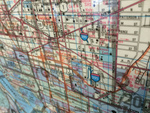A fantastic spectacle greets you as you come over the ridge at Penelokan and gaze down in wonder at the twin caldera of Lake Batur, yet the town itself leaves you puzzled. "What happened?" is really what you ask yourself. The further you descend into the crater, the more you find poor accommodation and service and unpleasant encounters with hawkers, and you ask yourself again, "What happened?" Surely this is one of the greatest, most spectacular natural vistas anywhere, with a beautiful lake and magnificent walking trails, and yet the whole experience is enough to turn anyone off the tourism trade. The accommodations are filthy, the food is generally expensive buffet-style catering to bus tours, and many of the trekking expeditions are essentially extortion. This is a side of Bali that you might almost wish to give a complete miss, which is a great shame as nature has created a wonder that you should be able to enjoy unimpeded. The best way to tackle this area is with an established Bali-wide trekking agency who will take you in, stay with you for the whole day, and then take you back out.
As for Penelokan (Rp5,000 to enter the village), it has a magnificent view to Mount Batur and, across the lake, a collection of restaurants and market stalls, and usually far too many people hustling you. The town has various hotels, with the most obvious and currently the best choice being the Batur Lakeview Hotel (tel. 0366/51394; www.lakeviewhotel.info/index.htm) with eight rooms at US$40 for a superior and US$60 for a deluxe. The hotel is made of carved stone and rooms are basic, but have amazing views over the lake below.
The double caldera of Danau (Lake) Batur is 14km (8 1/2 miles) across, 6km (4 miles) wide, and no one is quite sure how deep, although it is estimated at slightly more then 1,500m (4,921 ft.). It was once a mountain with a peak that rose some 3,000m (9,843 ft.) above sea level; now it only sits at 1,717m (5,633 ft.) and is a very active volcano. You can clearly see the plumes of smoke still rising from one of the lower spouts. The most recent eruption was in 1999 but it showed its true rage in 1917, destroying the old village of Batur and taking with it some 65,000 souls.
Farming continues on the nutrient-rich sides of the volcano and the lake feeds the neighboring rice-growing regions of Bangli, Buleleng, Gianyar, Klungkung, and Badung. Not surprisingly, the "temple at the head of the lake," Pura Ulan Danu Batur, is held in great reverence: Its priest, known as Jero Gede, is considered the island's most powerful.
Do not let the tourist circus of Penelokan discourage you from venturing further: You will find plenty more reasons to linger in the crater itself. The view is the main reason to come here; be sure to also take in the joyous winding road along the lake shore to Toya Bungkah, Pura Ulan Danu Batur, or even the hot springs (Air Panas). This area is great trekking territory. If you're going to climb Mount Batur, be sure to book your trekking guide before you arrive.
However, the overall feeling around Lake Batur will be at odds with your experience of the rest of Bali and may even be, on occasion, disappointing. So much was I bothered and even stunned by the experience of the Lake Batur basin, that I had to go back a few times to ensure that I had not misinterpreted the whole place.








